Pride apparel, a vibrant symbol of the LGBTQ+ community, manifests uniquely across the globe, reflecting the rich tapestry of cultures and histories that shape it.
Global Diversity in Pride Apparel
In North America, for instance, pride fashion often features bold, rainbow-centric designs, a nod to the iconic Rainbow Flag created by Gilbert Baker in 1978. This flag has become a universal symbol of LGBTQ+ pride, but the way it is embraced and interpreted in fashion varies widely. In European countries, there’s a noticeable blend of contemporary and traditional styles, where historical influences often merge with modern, avant-garde expressions of LGBTQ+ identity.
The story of pride apparel takes a different turn in regions like Asia and Africa, where cultural norms and the state of LGBTQ+ rights significantly influence its expression. In countries like Taiwan, which became the first in Asia to legalize same-sex marriage, pride fashion is burgeoning with an infusion of local cultural motifs blended with universal symbols of LGBTQ+ pride. Conversely, in many African countries where LGBTQ+ rights are still a contentious issue, pride apparel is often more subdued, yet it carries a potent message of resistance and hope. This contrast starkly illustrates how local attitudes and legal frameworks impact the expression of LGBTQ+ identities through fashion.
These regional variations in pride apparel are not just fashion statements; they are profound reflections of the global LGBTQ+ movement. Each garment, accessory, or color choice tells a story of struggle, liberation, and solidarity that transcends borders. The way pride apparel is worn and displayed around the world is a testament to the movement’s diversity and resilience, highlighting the universal desire for acceptance and the celebration of identity in all its forms.
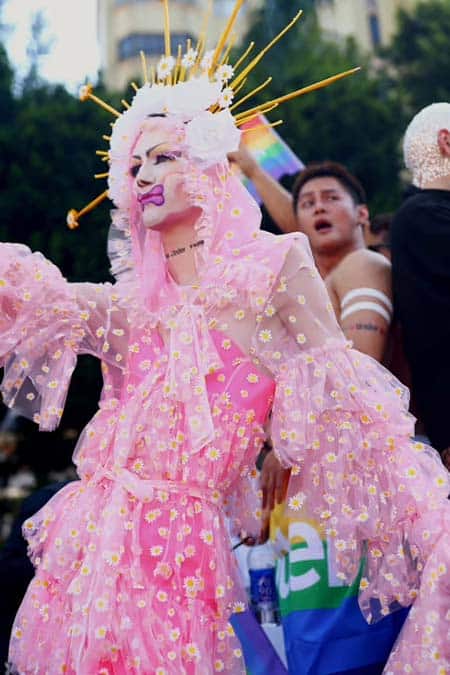
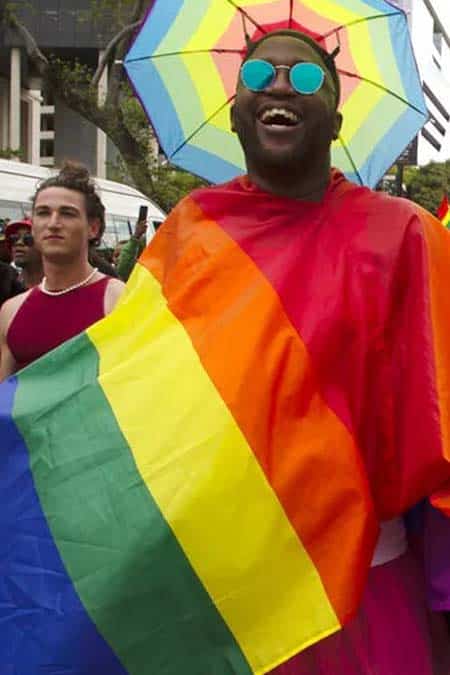
Left: Asia’s biggest pride parade in Taipei, Taiwan. Source: nbcnews.com
Right: Kenya is considering the Family Protection Bill 2023, which could lead to 50-year prison sentences for non-consensual same-sex acts. Source: africanews.com
Early Days of Pride Apparel: Origins and Symbolism
The origins of Pride apparel trace back to a pivotal moment in LGBTQ+ history – the Stonewall Riots of 1969. In the years that followed, as the first Pride parades painted city streets with a spectrum of colors, fashion emerged as a powerful tool for activism. The early Pride ensembles were far more than mere aesthetic choices; they were bold statements of defiance and visibility. Handmade T-shirts with slogans, DIY badges, and rainbow motifs started appearing, each piece echoing the community’s fight for equality.
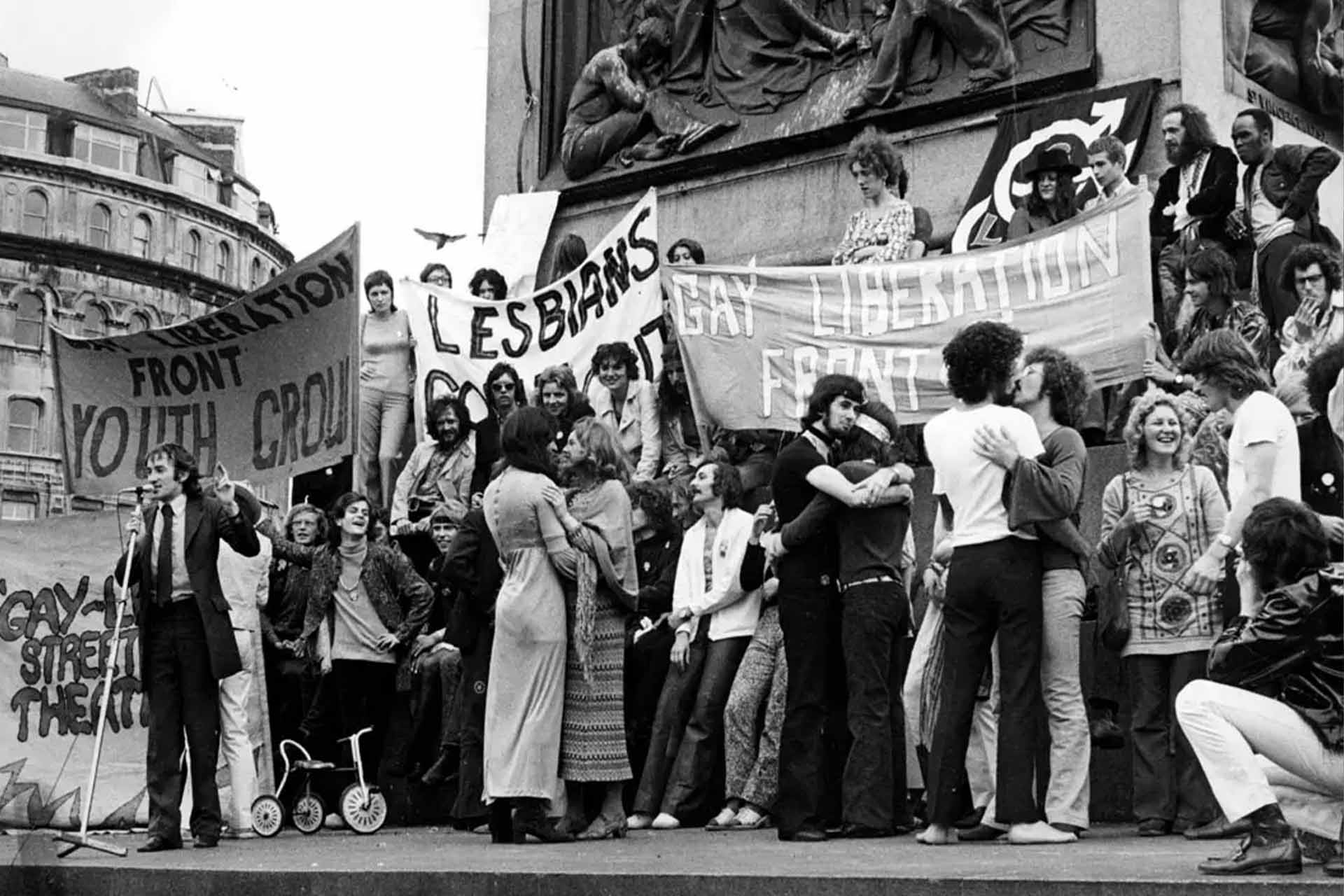
The 1969 Stonewall Inn uprisings weren’t the initial instance of LGBTQ individuals standing up for their rights, but they did signify a pivotal shift in the activist crusade, paving the way for subsequent achievements.. Source: businessinsider.com

Pride Sweatshirts Latest Arrivals
- Sweatshirts
The 1980s and 1990s: From Rebellion to Mainstream
As the LGBTQ+ rights movement gained momentum in the 1980s and 1990s, Pride apparel underwent a transformation. What started as symbols of rebellion slowly permeated mainstream culture. This era saw the emergence of more polished and commercially produced Pride clothing, as the community’s visibility in media and pop culture increased. Fashion became an avenue for both celebrating identity and mourning losses, particularly during the height of the AIDS crisis. Memorials and protests often featured garments that carried poignant messages, combining grief with resilience.
Celebrities and public figures began to embrace Pride fashion, further propelling it into the public eye. Designers started to recognize the importance and market potential of LGBTQ+ fashion, leading to the first collaborations and themed collections. These years also witnessed the rise of queer fashion shows and events, creating spaces where LGBTQ+ designers could showcase their work and narratives. However, with commercialization came controversy. Questions about the dilution of Pride’s original activist spirit arose, highlighting a tension that continues to influence the evolution of Pride apparel. The late 20th century thus set the stage for a complex interplay between fashion, identity, and commerce in the realm of Pride apparel.
Early Influencers: Pioneering Designers in LGBTQ+ Fashion
The landscape of Pride fashion owes much to a cadre of pioneering designers who boldly blended style with social statements. In the formative years, these visionaries were often integral members of the LGBTQ+ community or staunch allies. Leveraging their creative platforms, they challenged societal norms, weaving messages of equality and inclusivity into their collections. These trailblazers weren’t merely creating clothes; they were forging potent symbols of identity and defiance.
One such luminary is Willi Smith, whose work in the late 1970s and 1980s broke new ground. Smith’s designs were revolutionary, combining vibrant colors, unconventional materials, and bold messages. He championed diversity and inclusivity, paving the way for a more expressive and open approach to LGBTQ+ themes in fashion. His legacy lives on, inspiring contemporary designers to carry forward the torch of representation and pride.
Jean Paul Gaultier, another iconic figure, emerged as a pivotal force in the late 1980s and 1990s. His runway shows were more than mere fashion displays; they were acts of activism. Gaultier’s collections celebrated queer culture with flair and audacity, challenging traditional gender norms and sexuality in fashion. His famous skirts for men and the cone bra for Madonna are testament to his groundbreaking approach.
These early influencers extended their impact far beyond the runway. Their designs spilled into the streets, donned by activists and allies, uniting the community in a shared language of fashion. These pioneers set a powerful precedent, underscoring fashion as a formidable vehicle for social change and self-expression.
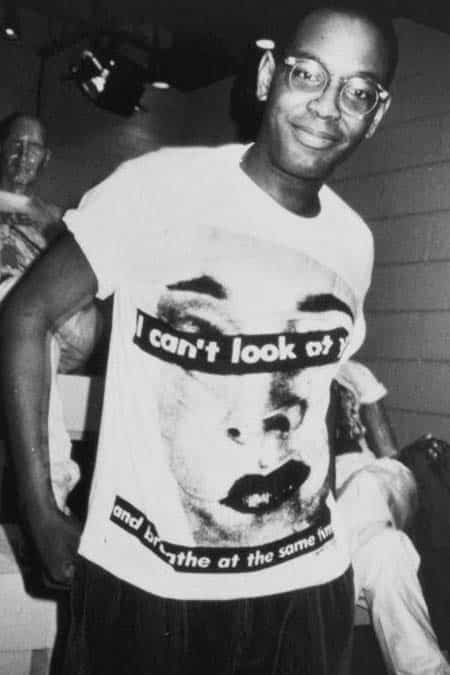
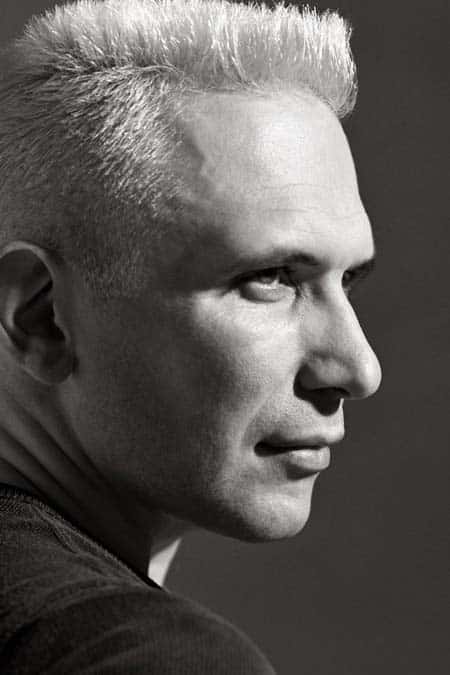
Left: Barbara Kruger designed this T-shirt for WilliWear Production’s “Artist T-shirts” in 1984 featuring Willi Smith. Object photography by Matt Flynn.
Right: Jean Paul Gaultier has been creating inclusive fashion since 1976. Source: jeanpaulgaultier.com
Modern-Day Icons: Brands Embracing Pride
As the vibrancy of Pride apparel started catching everyone’s eye, big-name fashion brands began to realize how culturally and commercially significant it was. These days, it’s almost a given to see giants like Nike and Levi’s rolling out their annual Pride collections. But remember, this shift from a niche to mainstream wasn’t overnight and it sure wasn’t without its share of debates.
Take Nike, for example. They’ve been a major player, launching collections that do more than just appeal to the LGBTQ+ community. They partner up with organizations like the Human Rights Campaign, ensuring that a part of their Pride line’s profits goes towards supporting LGBTQ+ rights. Their designs often reimagine the iconic Pride symbols, like turning the rainbow flag into sporty, modern attire.
But this shift hasn’t been all rainbows and butterflies. There’s been a fair share of criticism, with some accusing brands of “rainbow-washing.” The argument? Some companies might be using Pride-themed products more for profit than for genuine support of the LGBTQ+ community. This conversation isn’t black and white; it’s as colorful as the community itself.
A case in point is Levi’s collaboration with OutRight Action International. This partnership has been lauded for raising significant funds for LGBTQ+ rights globally. Some people have raised doubts about the extent of a brand’s dedication to LGBTQ+ matters beyond the Pride month.
The story of Pride fashion today is a tapestry woven with style, statement, and a bit of scepticism. Brands like Nike and Levi’s are not just designing clothes; they’re engaging in a narrative that’s as complex as the history of the LGBTQ+ movement itself.
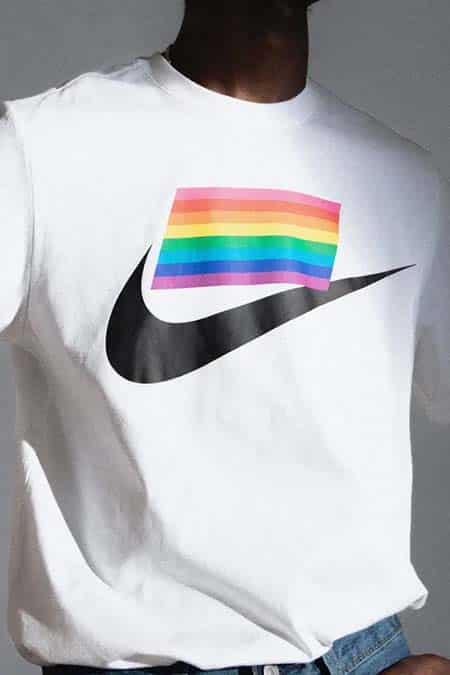
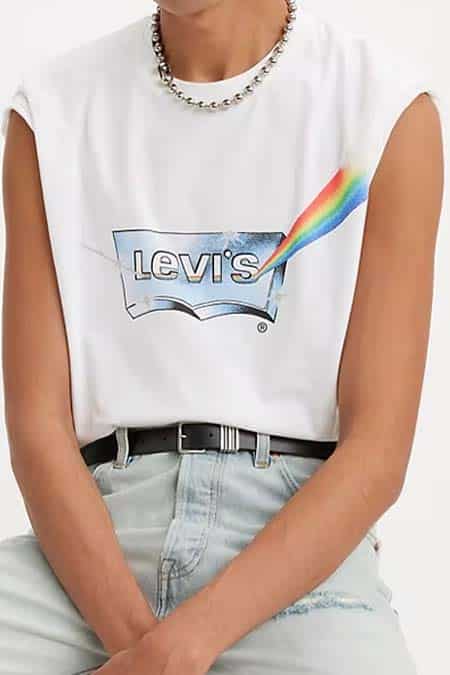
Left: Nike’s 2019 ‘BETRUE’ Collection, Designer Gilbert Baker. Source: nike.com
Right: Levi’s® donates annually to OutRight Action International, an organization that works towards promoting human rights for LGBTQIA+ individuals worldwide. Source: levi.com
Pride Apparel Beyond Borders
Pride apparel, while sharing a universal message of love and equality, takes on unique forms across the globe. In different cultures, it’s fascinating to see how Pride is expressed through fashion. From the vibrant kimonos worn in Tokyo’s Pride to the bold, traditional African prints infused in Johannesburg’s Pride march, each country adds its own cultural touch to Pride apparel.
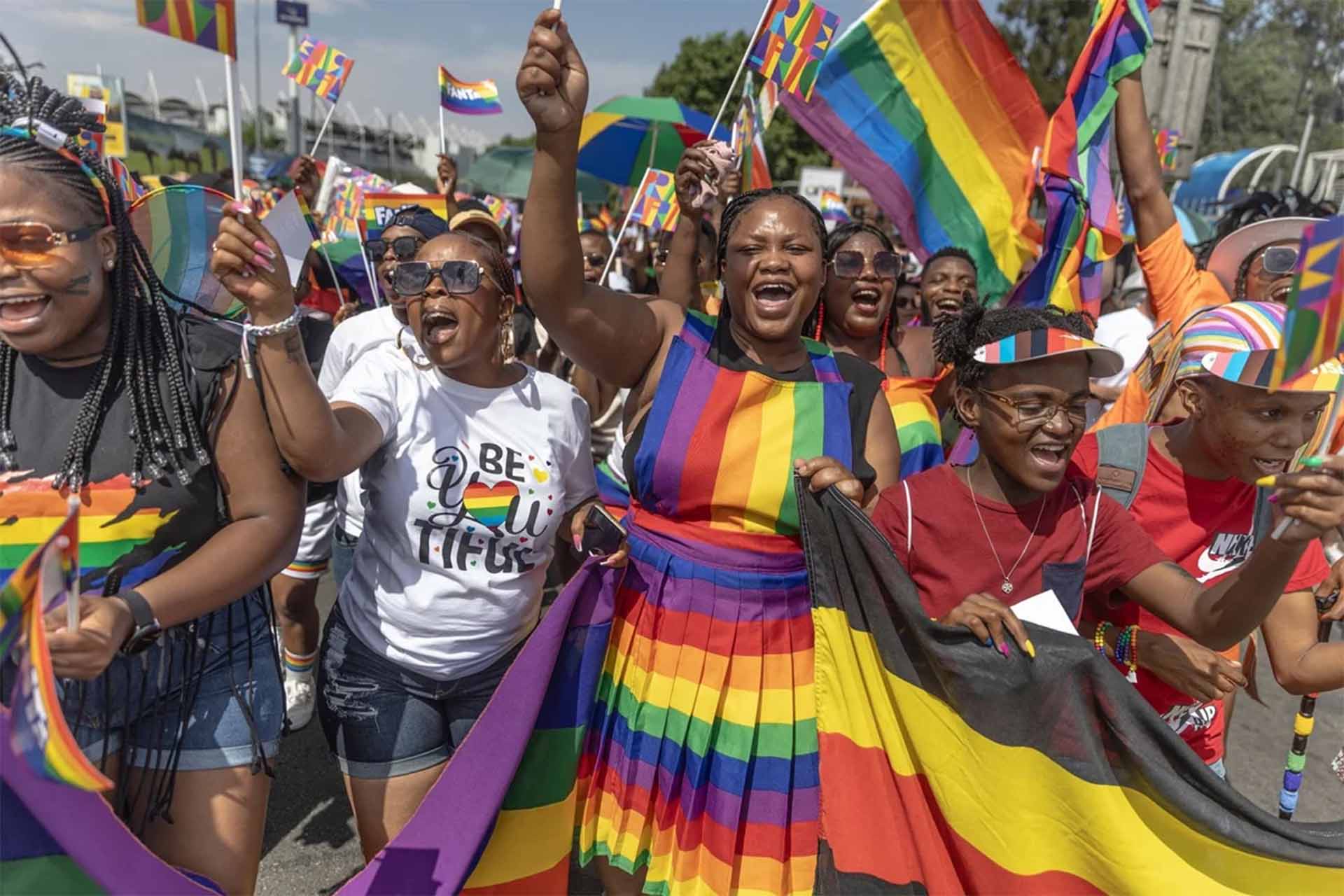
Johannesburg Pride Parade, captured on October 28, 2023 by GUILLEM SARTORIO/AFP via Getty Images.
In Brazil, for instance, the flamboyant costumes during São Paulo’s Pride blend local carnival traditions with the spirit of LGBTQ+ pride, creating a spectacle of resilience and joy. Meanwhile, in European countries like Sweden, Pride fashion tends to blend contemporary Western trends with symbols of LGBTQ+ activism, reflecting a different cultural approach to expressing solidarity and identity.
In Swedish Pride fashion, you’ll often see a harmonious marriage of modern style with traditional activist symbols. Designers like Acne Studios and Filippa K showcase this through their collections, which skillfully combine minimalist Scandinavian aesthetics with bold statements supporting LGBTQ+ rights. High-street brands like H&M also contribute, releasing annual Pride collections that fuse current fashion trends with rainbow motifs and empowering slogans, making a statement for inclusivity and diversity.
International Icons: Designers Making a Global Impact
The world of Pride fashion isn’t just shaped by big Western brands; designers from diverse backgrounds are also redefining it. These international icons are bringing their unique perspectives and cultural influences to the forefront of Pride apparel. Take, for example, Bobo Calcutta, an Indian designer blending traditional Indian attire with LGBTQ+ themes, creating stunning sarees and sherwanis that carry rainbow colors with cultural pride. Their work not only adds diversity to the Pride fashion landscape but also challenges traditional norms in South Asian societies.
Another trailblazer is Nigerian designer Emmanuel Tobiloba, whose bold designs incorporate African prints with modern silhouettes to make a statement about inclusivity and African LGBTQ+ identities. Her work is a celebration of heritage and diversity, providing a platform for African voices within the global LGBTQ+ community.
Emmanuel Tobiloba’s talent is beyond ordinary explanation from Nigeria. Established in 2020, his brand Mayetobs showcases a unique and eccentric style in redefining androgynous norms. The brand’s signature oversized pants exemplify fabric maximalism, while its flowing robes add a dynamic touch. Mayetobs stands as a tribute to the transformation of modern masculinity in fashion.
These designers, among many others, are breaking barriers and expanding the horizons of what Pride apparel can represent. Their contributions ensure that Pride fashion is not just a Western narrative but a global dialogue of style, identity, and activism.
Amplifying Voices: Social Media’s Impact on Pride Fashion
Instagram, Pinterest, and TikTok have all had a big impact on the development, discussion, and display of Pride fashion. They have established a global platform for this style of fashion.
During Pride month in June 2023, Instagram, with over 1 billion active users, reported a 30% spike in postings utilising rainbow colours, demonstrating the platform’s critical role in exhibiting Pride attire. According to The Economic Times 2020, Instagram was launching a number of new features for Pride month, some of which are familiar, while others are completely new to the platform. Instagram influencers frequently become trendsetters with their Pride attire, and designers use this platform to debut their Pride collections.
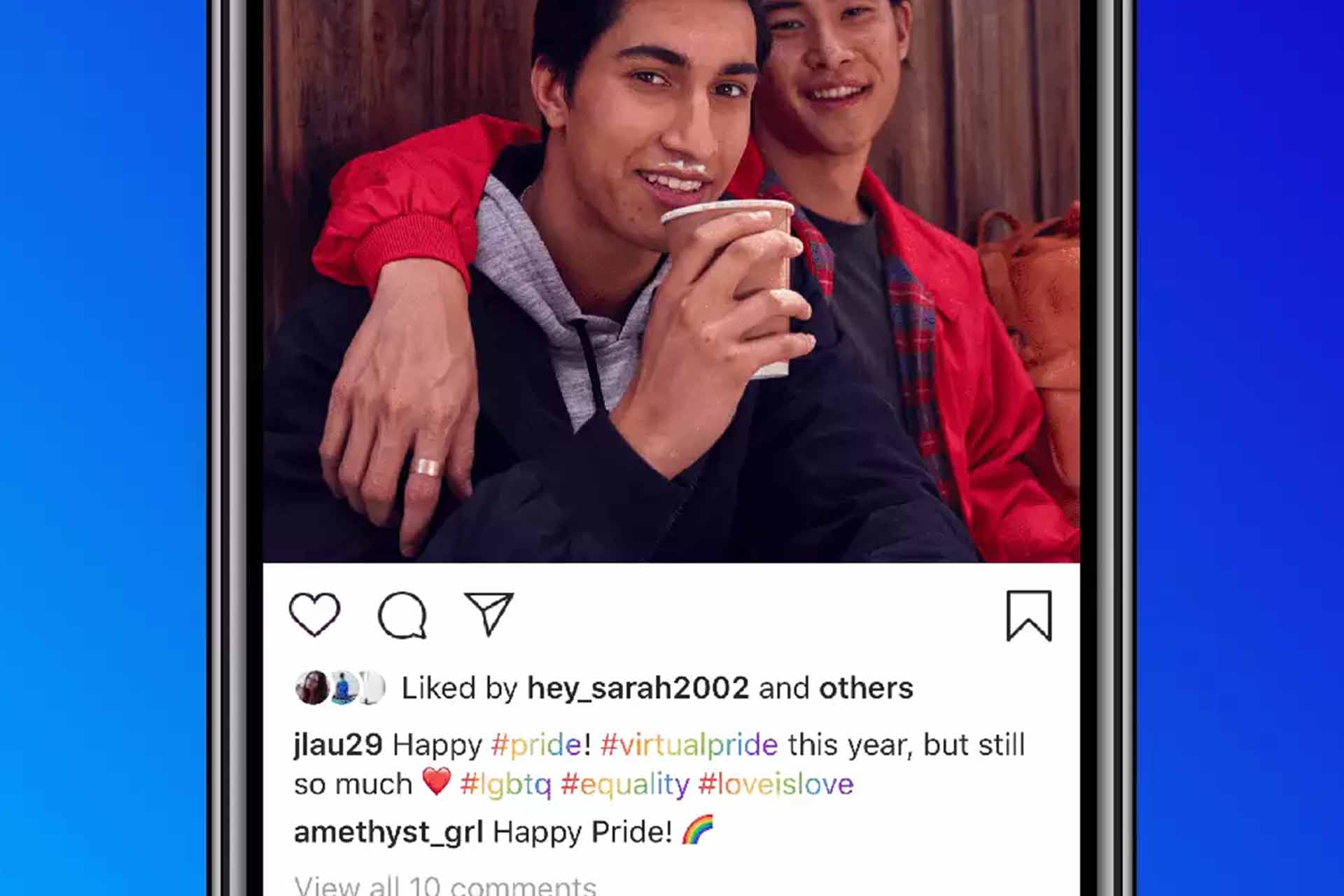
Rainbow hashtags in feed, Instagram 2020.
People on Pinterest have built boards full of Pride fashion inspiration, with millions of pins showcasing LGBTQ+ trends. In 2020, searches for “Pride outfits” and “Pride makeup” on Pinterest climbed by 60%, demonstrating a growing interest in discovering and expressing Pride through personal style.
TikTok, boasting over 800 million active users, mainly younger folks, has become a hot spot for showcasing vibrant Pride fashion. The #Pride2021 hashtag alone exploded with over 2.5 billion views. It’s filled with clips of everything from Pride parade outfits to DIY fashion tips, and deeply personal stories tied to LGBTQ+ identities. What’s cool about TikTok is how it lets people explain why their fashion choices matter, connecting their outfits to their personal experiences and larger community narratives.
All these social media platforms have turned into a space where Pride clothes mean more than just style. They’re now powerful tools for activism, spreading awareness, and bringing people together.
Trends to Watch: The Future of LGBTQ+ Fashion
So, what’s next in LGBTQ+ fashion? Well, we’re looking at a future where tech meets textiles. Think smart fabrics that change color or patterns with a swipe on your phone – yes, that’s coming! Already, designers are experimenting with LED and e-textiles, like the dress at the 2019 Met Gala that changed colors. Another big thing? Sustainable fashion. More and more, we’re seeing Pride apparel made from eco-friendly materials, reflecting a growing environmental consciousness. The market for sustainable fashion is expected to reach .81B by 2025, so this trend isn’t just a passing fad.
Predictions and trends shaping the future of Pride apparel
The future of Pride apparel is also looking super personalized. Customization is key, with brands offering more options to personalize your Pride gear. This trend is catching on, with a recent survey showing that 25% of shoppers are interested in personalized products. And let’s not forget digital fashion. Yep, virtual clothes for your online avatars are becoming a thing, especially in gaming and social media spaces. This digital shift could mean a new way to express LGBTQ+ identity in virtual worlds.
Move Forward: Authenticity and Inclusivity
There’s a big focus on keeping it real and inclusive. For designers and brands, this means truly understanding and representing the diverse LGBTQ+ community. It’s not just about slapping a rainbow on everything. For instance, a 2020 study revealed that 46% of LGBTQ+ consumers prefer brands that don’t just ‘rainbow wash‘ but engage with them all year round.
The challenges and opportunities ahead for designers and brands
The challenge here is to stay authentic while being innovative. Brands need to engage with the LGBTQ+ community in meaningful ways – think collaborations, not just endorsements. And there’s a huge opportunity in size inclusivity. The plus-size fashion market is booming, with 288 billion in 2023, and Pride fashion embracing this can really resonate with a broader audience. So, the future? It’s bright, diverse, and oh so exciting for Pride apparel!
Conclusion
Alright, let’s take a quick stroll down memory lane. We started with the rebellious roots of Pride apparel back at the Stonewall Riots, where fashion was more about making a statement than being on-trend. Fast forward to today, and we’ve seen a complete transformation. Pride fashion is now a global phenomenon, with major brands and independent designers all adding their flair. Did you know that the global market for LGBTQ+ themed apparel is now part of a wider industry valued at over 1,7 trillion? It’s not just about rainbow flags anymore; it’s about diverse expressions, cultural influences, and cutting-edge designs.
So, what can you do? Be a part of this vibrant story. When shopping for Pride apparel, look beyond the rainbows. Support brands that are genuinely committed to the LGBTQ+ cause, those that collaborate with the community, and give back. Remember, your fashion choices have power. By choosing inclusive and authentic brands – ones that embrace all body types, identities, and expressions – you’re not just buying a piece of clothing; you’re making a statement, you’re part of a movement. With the LGBTQ+ buying power in the U.S. alone estimated at trillion, every purchase you make is a vote for the kind of world you want to live in. So go ahead, wear your Pride, and wear it with purpose!
FAQ
Back in the day, Pride fashion was all about making bold statements, think Stonewall Riots era. Fast forward to now, and it’s this amazing mix of DIY stuff and designer labels, all celebrating the LGBTQ+ community’s diversity. It’s come a long way!
Fashion’s like a voice for the LGBTQ+ community. It’s how many express who they are, stand up against old-school norms, and show unity. It’s more than clothes; it’s about pride, resistance, and fighting for equal rights.
Big brands are jumping on the Pride wagon with special collections. The cool part? Some collab with LGBTQ+ designers and support the cause.
Social media’s huge for Pride fashion! Platforms like Instagram and TikTok let folks show off their style, tell their stories, and spread the word about LGBTQ+ rights. It’s like a 24/7 global Pride parade!
Want to make a difference? Shop from brands that truly back LGBTQ+ rights. Look for those that work with LGBTQ+ designers, support related causes, and promote inclusivity all year, not just during Pride month.

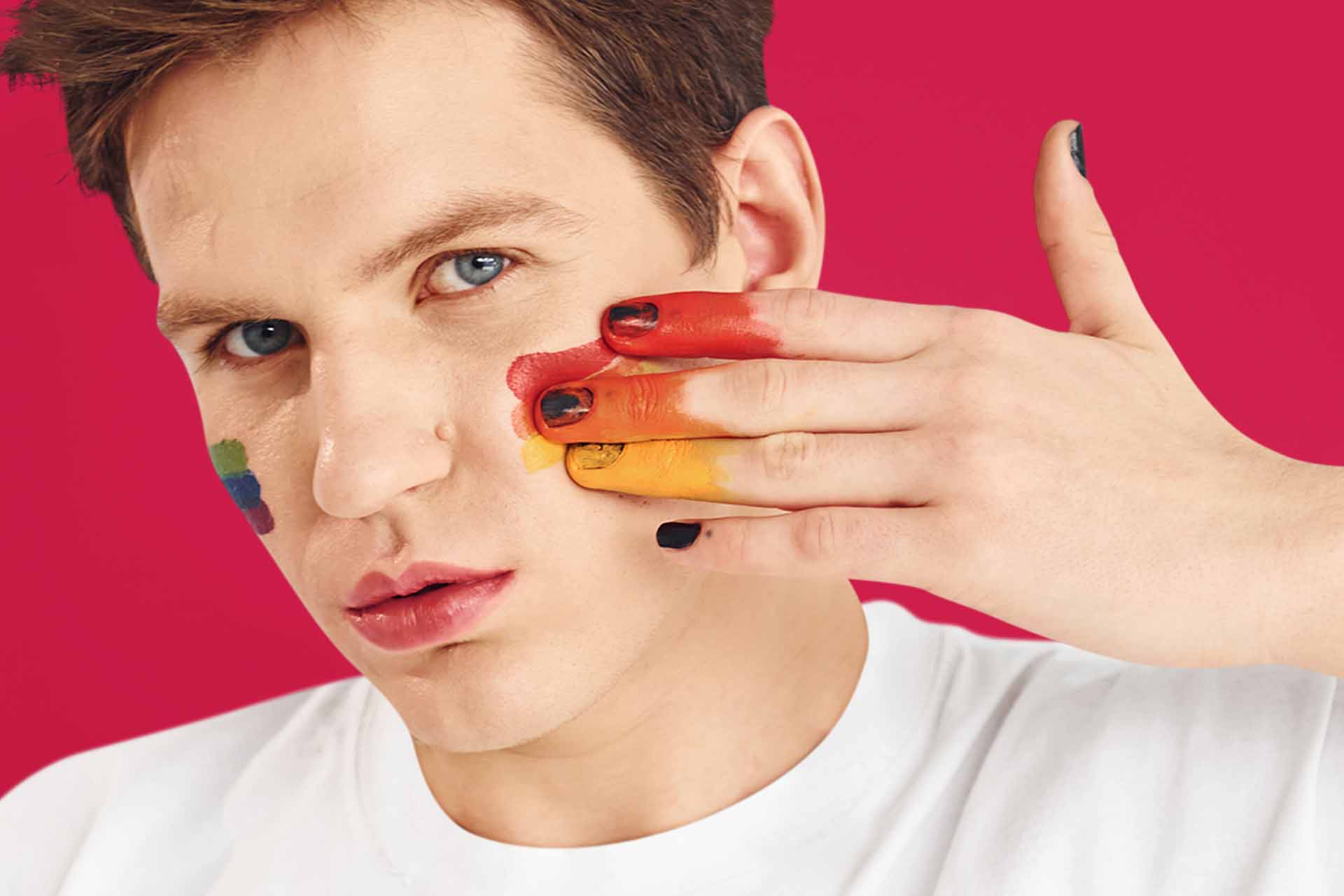
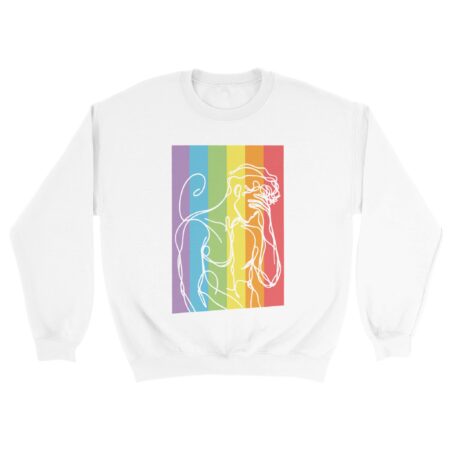
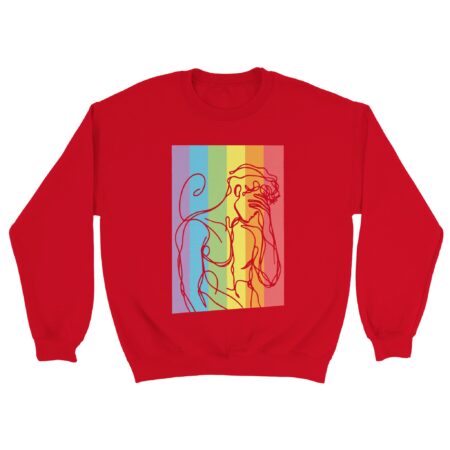
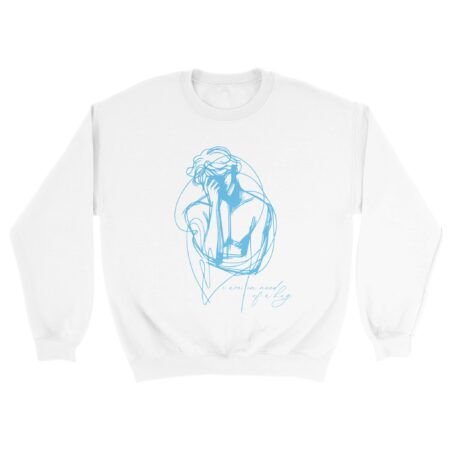
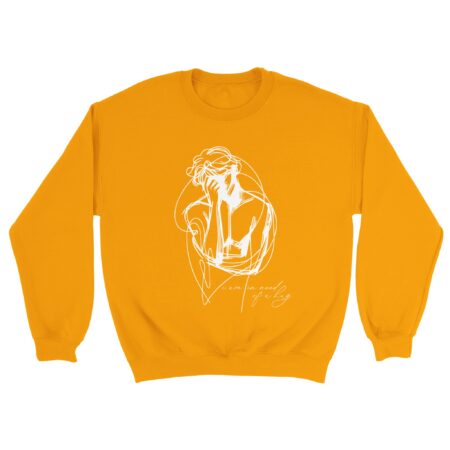
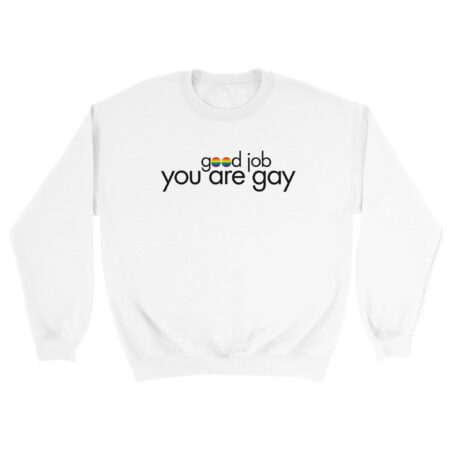
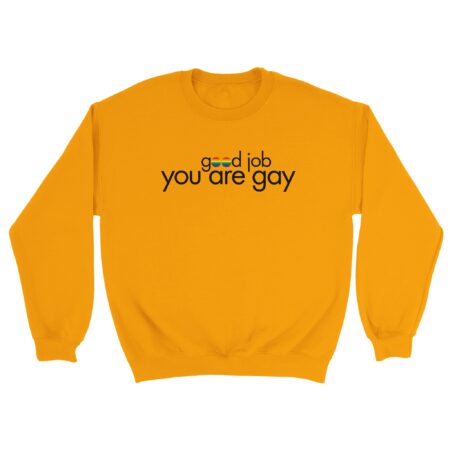
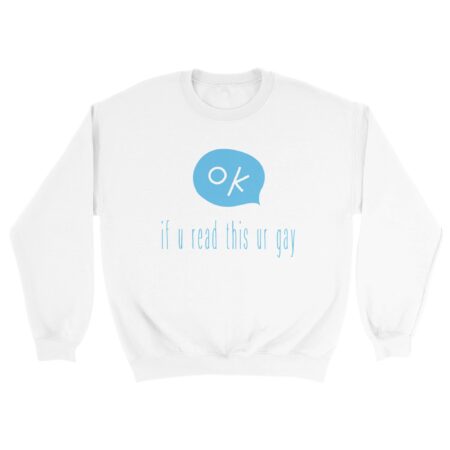
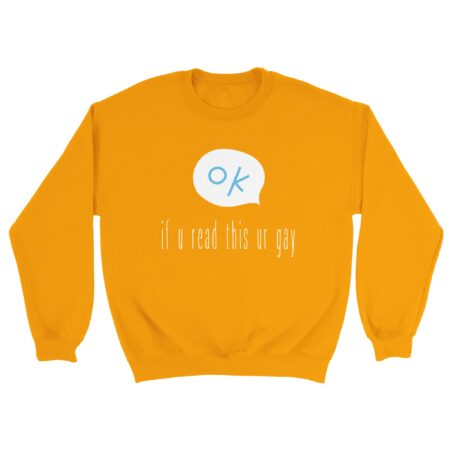
Leave a Comment
Your email address will not be published. Required fields are marked *